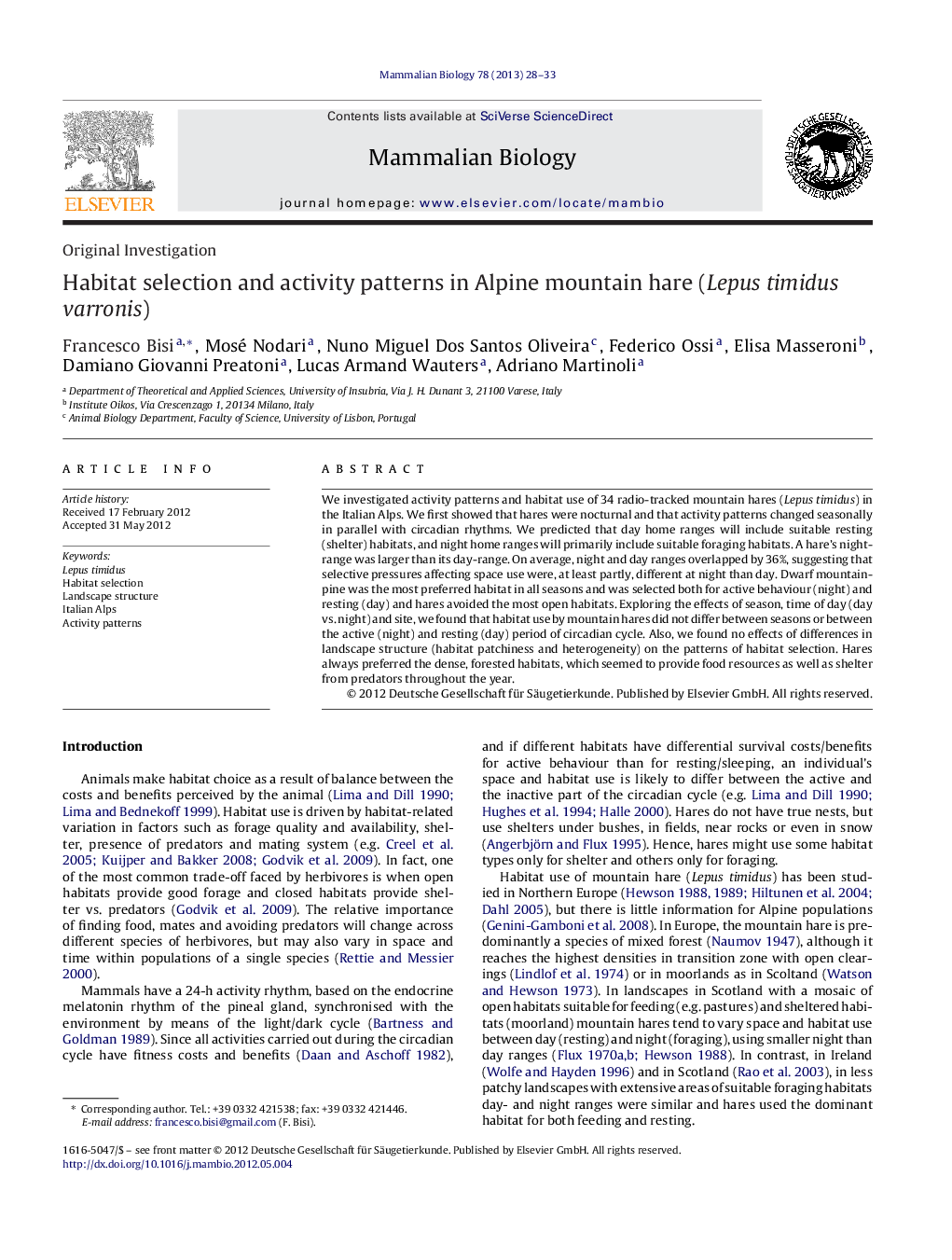| Article ID | Journal | Published Year | Pages | File Type |
|---|---|---|---|---|
| 2193694 | Mammalian Biology - Zeitschrift für Säugetierkunde | 2013 | 6 Pages |
We investigated activity patterns and habitat use of 34 radio-tracked mountain hares (Lepus timidus) in the Italian Alps. We first showed that hares were nocturnal and that activity patterns changed seasonally in parallel with circadian rhythms. We predicted that day home ranges will include suitable resting (shelter) habitats, and night home ranges will primarily include suitable foraging habitats. A hare's night-range was larger than its day-range. On average, night and day ranges overlapped by 36%, suggesting that selective pressures affecting space use were, at least partly, different at night than day. Dwarf mountain-pine was the most preferred habitat in all seasons and was selected both for active behaviour (night) and resting (day) and hares avoided the most open habitats. Exploring the effects of season, time of day (day vs. night) and site, we found that habitat use by mountain hares did not differ between seasons or between the active (night) and resting (day) period of circadian cycle. Also, we found no effects of differences in landscape structure (habitat patchiness and heterogeneity) on the patterns of habitat selection. Hares always preferred the dense, forested habitats, which seemed to provide food resources as well as shelter from predators throughout the year.
